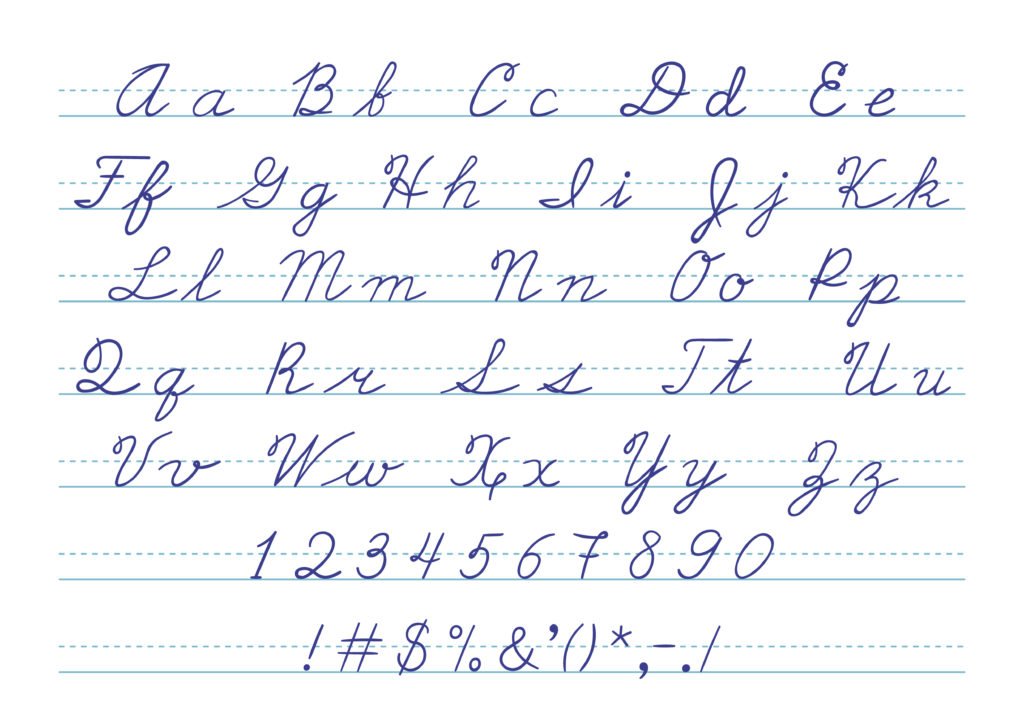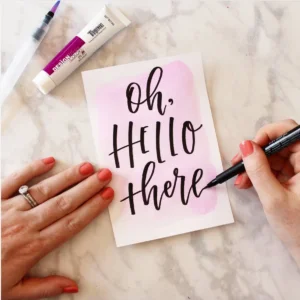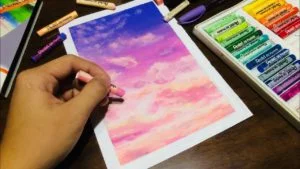There are several writing styles in which cursive writing is one of them. Learning cursive writing is important for kids because it is a form of handwriting that enables you to write words beautifully coiled together. While you learn it, you write some words joined which adds flow and speed to your writing, making it look elegant. You don’t need a special occasion to use cursive writing, you can use it in everyday use.
What is Cursive Writing?

Cursive writing comprises no to least pen/pencil lifting from the paper. It comprises 3 subcategories that are “looped”, “italic” or “connected”;
When the various characters are written connected, then they are said to be “looped”;
The term “Italic” shows no joints or links between alphabets j, q, g or y. The words here are slanted. And the last element of the cursive handwriting subcategory is “Connected” here alphabets are connected and require least to no pen lifting; the terms are curved here to speed up your handwriting.
Also read Argumentative Essay Writing: Step by Step Guide
Cursive Writing History
History holds a record that penmanship dates back to more than a thousand years. Calligraphy and Cursive writing came into existence much later on; In the 600s Romans were one of the first users to do their tally and write scriptures.
However, we saw the rise of cursive writing after the fall of the Roman empire when monasteries rose, monks and priests used it to transcribe holy manuscripts; Though the style and form vary from time to time depending upon the geographical location.
During the 8th century, an English monk made it mandatory to use cursive to transcribe scripts from classic roman characters. The monks named this form of writing as Carolingian Miniscule and were useful: decipherable, lowercase letters, words grouped, and punctuation.
Also read English Story Writers
FUN FACT: The constitution of the United States of America is also written in this writing style.
The cursive writing form we write in today developed in 16th century Europe. People began enjoying connecting letters with curves, loops and ends and with time it became quite popular across different languages and available to the citizens of the region and nation.
It became a part of the various education systems and step-by-step guide was introduced to teach cursive easily. Soon textbooks with special copper plates were printed where students could trace the preprinted letters with their writing tools, which was usually a quill pen.
Later many variations were introduced to make it look more elegant and beautiful. New scripts and methods were introduced like Spencerian script, Palmer method, D’Nealian handwriting method and a few more.
Tools Required
With technology and progress in society in all forms today, we have many alternative ways to learn and improve our cursive writing. Below are a few tools that can be used.
- The cursive writing book set.
- Dry erase workbook.
- The magnetic tablet (available in both uppercase and lowercase).
- Cursive doodle workbooks.
- Steps4kids cursive DVD.
- There are various apps on play store and apple store that can be downloaded which appear more appealing to kids these days.
- Blackboard and chalk.
- Fancy pens and pencils ( to them they appear to be like toys, so they write and take part more).
How to learn Cursive Writing?
Start by mastering each uppercase and lowercase alphabet individually. Step-by-step letter formation followed by word and sentence formation will help to learn the art of cursive writing quicker.
Take your time to practice whenever you can. The best way to learn and improve is to practice as much as you can; purchase a practice workbook or any of the tools mentioned above and work on it daily. Make use of practice cards and sheets to test yourself and increase engagement.
Benefits of Learning Cursive Writing
Cursive writing has many benefits to its use as it boosts your writing and reading skills. It enables you to have a greater knowledge of spellings and also fewer spelling errors are made. People who use cursive writing have a better knowledge of words and the connection between various alphabets of a word. Other than being able to form words easily it makes you an overall wonderful writer you know what letter will come next as it will tie to the previous one easily. You gain a better understanding of how words and alphabets need to be organised and combined to form the perfect sentence or simply a word.
Cursive writers write faster than the people who use block letters. It doesn’t require you to stop and change the slope or stroke after every alphabet. It gives the work a neat and presentable appearance.
Cursive writing is so fun that you will enjoy writing instead of typing. You’ll prefer writing them down; as a result, you will remember most of the information you jot down. It increases your information retention ability.
Cursive writing can work as a teaching aid for people who have suffered certain brain injuries because studies suggest that their ability to write and understand print reduces but their ability to comprehend cursive remains. As a result, it can be helpful to people with learning impairment, dyslexia.
Declaration of Independence and many other legal documents have been written in cursive so that people can easily read the most valuable documents of the country and expand their knowledge.
Also read Easy Tips to Improve your English
Tips to Improve Your Cursive Handwriting
- Start your journey by learning the lowercase letters first.
- Copy and trace the letters to become more confident and comfortable with the writing style.
- After mastering all the lowercase letters, move the upper case or the capital letters; follow the same copy and trace method.
- Set a time to practice every day and invest at least 20-30mins daily.
- Don’t overdo or overwrite it; keep it neat and clean.
- Start at a slow pace; there is no need to rush the process. Write gracefully and elegantly.
- Handwritten text is more personal than the typed one on the screen.
- Consider using ruled paper for writing in the beginning. It is the most suitable type of paper for cursive writing.
- keep a track record of your practice and learning. It will help you organize and calculate your progress so far.
- Be calm and don’t stress over it isn’t the end of the world if you cannot make the right stroke immediately. Take your time.
For more such articles keep visiting our blog!
Share with your friends






